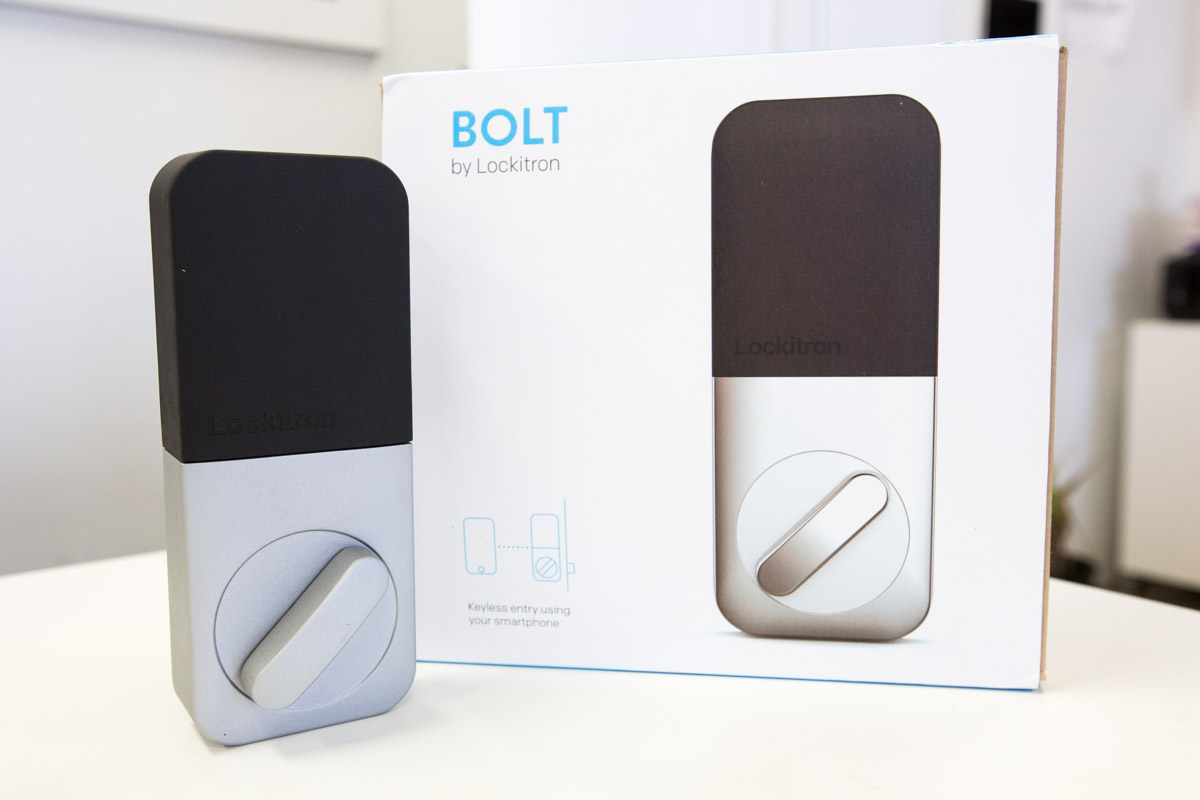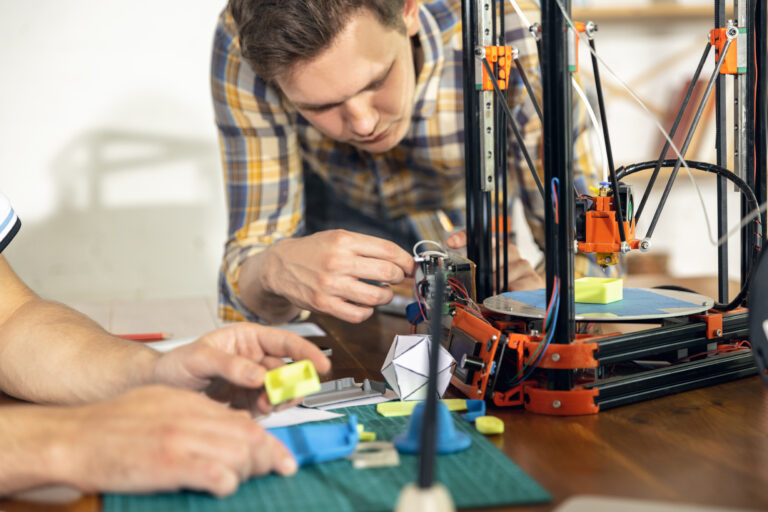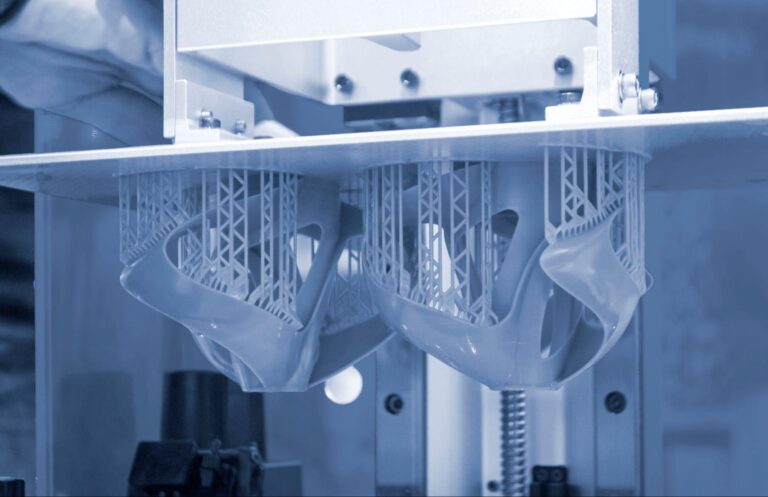Time to read: 7 min
Entrepreneurs are known for falling so hard for their own products that they can’t see past all the fancy features. Not to knock all those labors of love, but when it comes to building products that work (and brands that last), a little cool-headed distance goes a long way. Certain industries lend themselves better to simplicity than others (think door locks vs rocket ships), but even there it’s possible to layer on the bells and whistles a little too thick.
We sit down with Paul Gerhardt, co-founder of Lockitron, the company that invented the smart lock and booted up a whole new industry sector, for a frank conversation about how they overcomplicated their second-generation product and finally got things right with their third.
Moving into the Storm
Lockitron’s first-gen product effort was a series of electronic customizations to existing locks. This was back in 2011, before anyone else had entered the field. Then, in the fall of 2012, the company became a collateral victim of an apparent anti-hardware wave in the Kickstarter ecosystem: “This was back when Kickstarter reviewed and approved every single campaign application,” explains Paul. “We got rejected, officially because we were considered a ‘home improvement’ project.”
Paul and his team were not to be deterred. They studied the data on the two major crowdfunding platforms, Kickstarter and Indiegogo, and determined they could just as easily build their own crowdfunding platform—and they did. “We built a white label crowdfunding site,” he shares. “Hosted it ourselves, opensourced the code on GitHub, and it got featured as one of the top ten projects on that platform.”
They took in $1 million on the first day.

Flush with cash, they now faced the even more daunting prospect of designing a smart lock for the residential market that would work with all of the vastly differing variations on locks and lock mechanisms. The hole in your front door might have the same standard diameter, but the actual hardware you or your builder install varies to the point of becoming art.
To cover—literally—all of these variations, Lockitron designed a large box-like structure that fit onto the existing lock. Trouble with that was that over time, the alignment went off, and the lock no longer fit the way it should. Not to mention it had no fewer than fifty (50) custom-molded plastic and metal parts, and functionality that fell flat on arrival.
Unnecessary Feature One: the Knock Sensor
The idea here was that if you weren’t home and someone knocked, the sensor would pick up on the vibrations pulsing through the door, and the system would push a notification to your phone. You could then decide whether to open the door or not. Say, for a friend staying with you or maybe a delivery person. Not that most of us would feel comfortable opening the door to strangers remotely. Paul agrees it wasn’t the best idea: “In practice, it was silly because people don’t really knock—they ring the bell.”

The other thing the team discovered, mainly through user feedback after the first thousand or so units shipped, was that door sensors don’t work with heavy duty, hurricane-proof doors in Florida (knock strength < hurricane strength), or with the light flimsy doors in lower-income neighborhoods that would rattle in their frames every time a truck rolled by.
Unnecessary Feature Two: Low-Power Wi-Fi
Lockitron combined Wi-Fi and Bluetooth on the same circuit board, thinking this would give people more choice and flexibility in how their smartphones interfaced with the lock.
“We wanted the lock to be Arduino compatible [hence the third AVR controller] so people could modify it,” explains Paul. But the customer base for smart lock systems is different than the user base of, say, racing cars, who might in fact enjoy modifying their machines. People just wanted their Lockitron to work, not to tinker with it.
There was also the “walled garden” trend that Paul and his team began to notice—the tendency for communications device manufacturers, notably Apple, to lock up access and prevent users from modifying the devices. So even if a customer wanted to modify their smartphone and the connection to the smart lock, the manufacturers’ walled gardens would render that nearly impossible.

The final nail in the low-power Wi-Fi coffin was the Wi-Fi itself. “The Wi-Fi protocol supports a power saving feature that lets you run a connected device off four AA batteries for over a year. Unfortunately, not every router has this feature, and what’s worse, it’s very difficult to see if the router supports that mode or not,” explains Paul. So if you do have a non supporting router, your batteries would drain within 2 months because you’re draining a lot more power from the lock just to keep the Wi-Fi running. Twenty percent of Lockitron’s customers experienced this very thing—and let the company know about it.
Unnecessary Feature Three: Fifty Custom Parts
Okay, this wasn’t really a “feature,” but the reality of no fewer than fifty custom-made parts did complicate Lockitron’s product significantly. “In addition to the alignment and the battery issue,” shares Paul, “we had to deal with the complexity of quality controlling these fifty custom parts. Tolerance variations were cumulative, meaning, some parts could be fine by themselves (+/- 1%), but if you put enough -1% parts together, the product won’t work as intended. Chasing these problems cost us time. And time cost us our customers’ good will.”
The good will of the consumer is not something to be trifled with. Too many other options and choices out there for them to sit patiently on their hands while a startup figures out their growing—er, product pains. Unless, of course, you’re literally the first player in your space, and then people will cut you slack only because there’s nowhere else they can get the product. But you still need to do right by your customer, because you won’t be “the one and only” forever.

“It was these three factors—alignment, battery, and part complexity—that made this generation of our smart lock fail, and that made us decide not to take our crowdfunded product to retail,” says Paul.
The result was that over a period of three years, Lockitron took back 10 percent of the units they shipped following their crowdfunding campaign—and doing the right thing and refunding customers’ money (refunds were about 30 percent, including pre-order cancellations). In a smart move, however, with their customers’ permission they transitioned the charge authorizations for those units that had not yet shipped, to the third generation product, which would be called Bolt.
Back to Basics
This was a case where you kind of do want to throw the baby out with the bathwater. Lockitron stopped just short of that: with Bolt, their V3 product, the team went back to their roots, putting their lessons learned to good use and taking their customers’ feedback into serious consideration.
“If your first product is a breakout success, it’s tempting to follow that up by trying to repeat the formula but pack in a lot ‘more,’” says Paul. “‘More’ as in everything you had wanted to do before but didn’t have the time, resources, or budget to do. But that’s a trap.”
For Lockitron, he explains further, V3 is a return to focus, but a focus on quality rather than any quantitative aspect. He offers, “If you want a mantra on how to make your second or third (or fourth) product, it should be ‘better’ not ‘more’.”

Their eye on “better,” Lockitron based Bolt on the same mechanical platform as their V1 product, and dropped all of the mechanics from V2. They designed a full replacement lock that replaces the outside and the inside mechanism, but still fits within that standard door hole. Mechanically, this approach made Bolt smaller and a lot simpler than its predecessor because “you’re working with a known set of restraints,” explains Paul. “We got rid of the knock sensor and put the Wi-Fi onto an external device we call ‘Bridge’ that plugs into the wall.”
Bolt’s design is not only appealing, it’s highly functional: the top half of the device is black plastic to give the Bluetooth radio frequency better signal strength (metal cuts the range down). Bluetooth stayed in the new design because it’s built into smartphones.
Another detail other smart lock manufacturers typically overlook are the internal gears. You may not see them, but they do have an impact on the customer experience: you may not want to actually hear your door mechanism whirring itself locked. Traditional plastic gears are made with delrin polymer, but Lockitron opted for a polymer called hytrel, which is a softer plastic. In addition, the teeth of the gears are not straight up-and-down vertical, they’re angled ever so slightly in a helical design, which is incredibly challenging to tool. But those two factors make the gears significantly quieter; so much so that Paul says with complete confidence, “We have the quietest gears on the market.”
As for the knob, that ubiquitous functionality, that part of the lock with which we come into direct physical contact the most—and which you’ll also notice in the company’s logo—Lockitron went through a total of sixty designs. “We used 3D printing for figuring out the best knob ergonomics. For those tactile parts of a product, it’s not good enough to sketch it out. You gotta feel it. 3D printing is critical for rapid iterations, and enabled us to go through 20 designs in a single day. So we finalized the knob design within a week.”

As for features, there is one, but it’s a lot simpler and not susceptible to physical door vibrations, unlike the knock sensor: Bolt can sense when you walk up to your door (because you’re carrying your smartphone with you), recognizes you, and opens the door for you. And if you should lose or misplace your phone, you can change your password remotely and the lock will not authorize access.
The Final Solution, Unlocked
“We went from 50 custom-made parts to 10,” says Paul. “Simplicity is great for two things: expense and reliability.”

And brand credibility, we add. Paul nods vehemently. “At the end of the day, locks have just two purposes,” he says. “To lock the door and to communicate to you, visually, the state it’s in [locked or unlocked]. That’s all you really want.”
Yep, that’s pretty simple. Anything on top of that is gravy, and it’s up to your customers to decide if they want the extra helping—or not.










